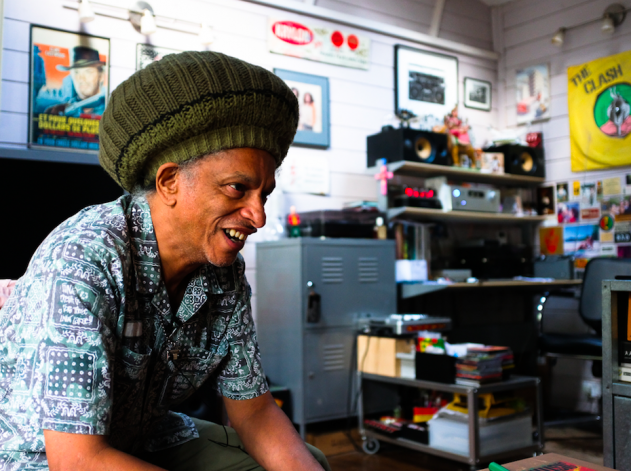Hattie Collins talks 15 years of following grime
- Text by Niall Flynn

Few know grime like Hattie Collins.
The journalist and author has been there since the first wave, covering the rise of Wiley, Dizzee Rascal et al at the turn of the millennium as its certified documenter-in-chief.
Over the past few years, as mainstream circles have fought to embrace Skepta and the likes, she’s remained one of its most trusted sources. Her 2016 book, This Is Grime, is the definitive text when it comes to chronicling the culture’s rise and rise.
In the latest episode of Joining the Dots with Don Letts, a new podcast from Spaces In-Between, Collins sits down with the Rebel Dread to discuss a career spent following grime. Covering everything from the early raves to Boy Better Know’s takeover at the London’s O2 arena, Collins presents an oral history of her 15-year association with the genre – and why it doesn’t like ceasing any time soon.
Listen and subscribe to the podcast here.


You can find Joining The Dots on iTunes here.
Spaces In-Between explores unexpected style and the roots of subculture. See more on their website here.
Enjoyed this article? Like Huck on Facebook or follow us on Twitter.
You might like

Jake Hanrahan: “Boys can cry, but we don’t all fucking want to”
Hard Feelings — In the latest edition of our column on masculinity and fatherhood, Rob Kazandjian speaks to the conflict filmmaker-journalist and Popular Front founder about his childhood, the found family and community at his Muay Thai gym, and the “complete counterculture” of ‘no rules’ fighting.
Written by: Robert Kazandjian

A new documentary traces the rise, fall and cratering of VICE
VICE is broke — Streaming on MUBI, it’s presented by chef and filmmaker Eddie Huang, who previously hosted travel and food show Huang’s World for the millennial media giant.
Written by: Ella Glossop

Capturing what life is really like at Mexico’s border with the USA
Border Documents — Across four years, Arturo Soto photographed life in Juárez, the city of his father’s youth, to create a portrait of urban and societal change, memory, and fluid national identity.
Written by: Miss Rosen

In search of resistance and rebellion in São Tomé & Príncipe’s street theatre culture
Tragédia — A new photobook by Nicola Lo Calzo explores the historical legacy found within the archipelago’s traditional performance art, which is rooted in centuries of colonial oppression and the resilience of people fighting against it.
Written by: Miss Rosen

As Kneecap and Bob Vylan face outcry, who really deserves to see justice?
Street Justice — Standing in for regular newsletter columnist Emma Garland, Huck’s Hard Feelings host Rob Kazandjian reflects on splatters of strange catharsis in sport and culture, while urging that the bigger picture remains at the forefront of people’s minds.
Written by: Robert Kazandjian

Alex Kazemi’s Y2K period novel reminds us that the manosphere is nothing new
New Millennium Boyz — Replete with MTV and endless band t-shirt references, the book follows three teenage boys living in 1999 USA as they descend into a pit of darkness. We spoke to its author about masculinity, the accelerated aging of teenagers, and the rebirth of subcultures in the algorithm age.
Written by: Isaac Muk

